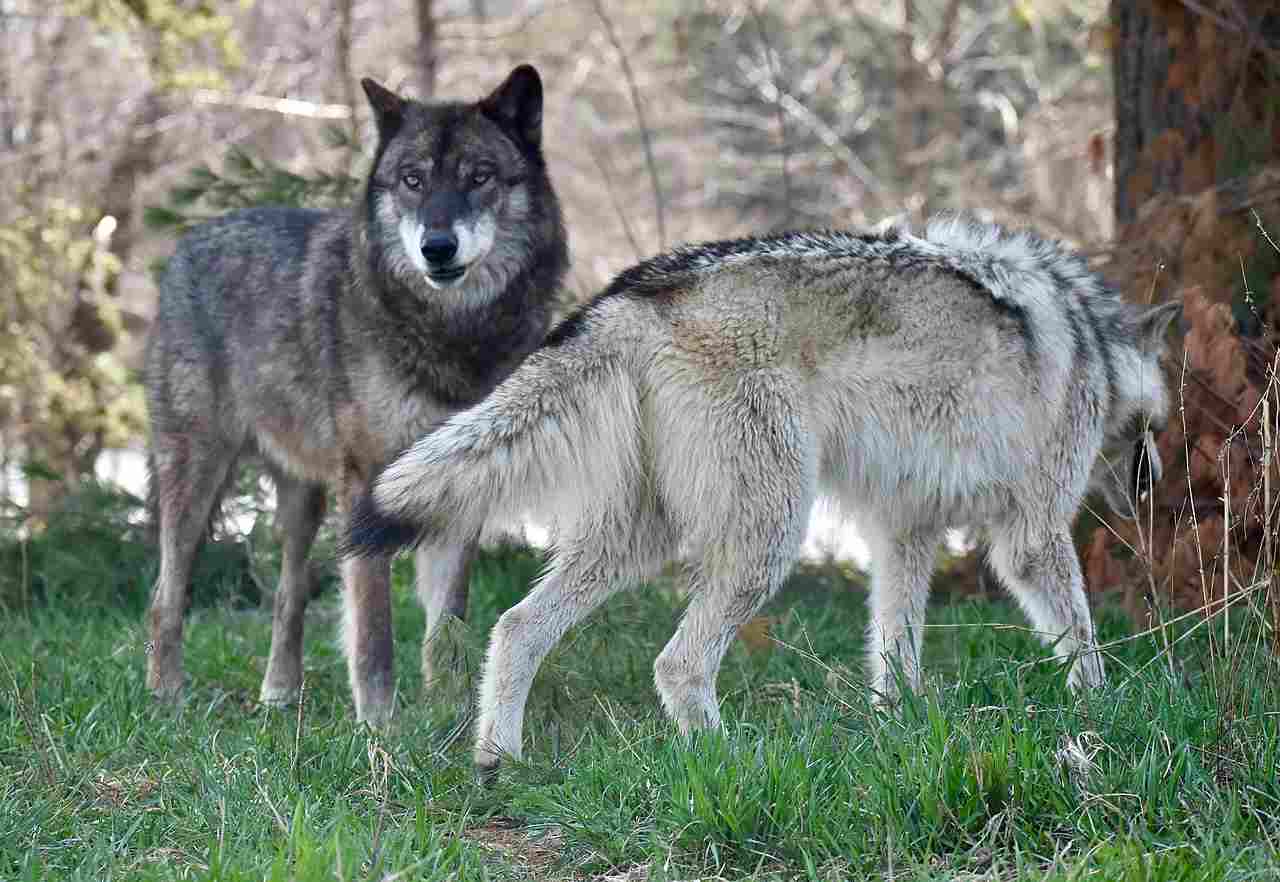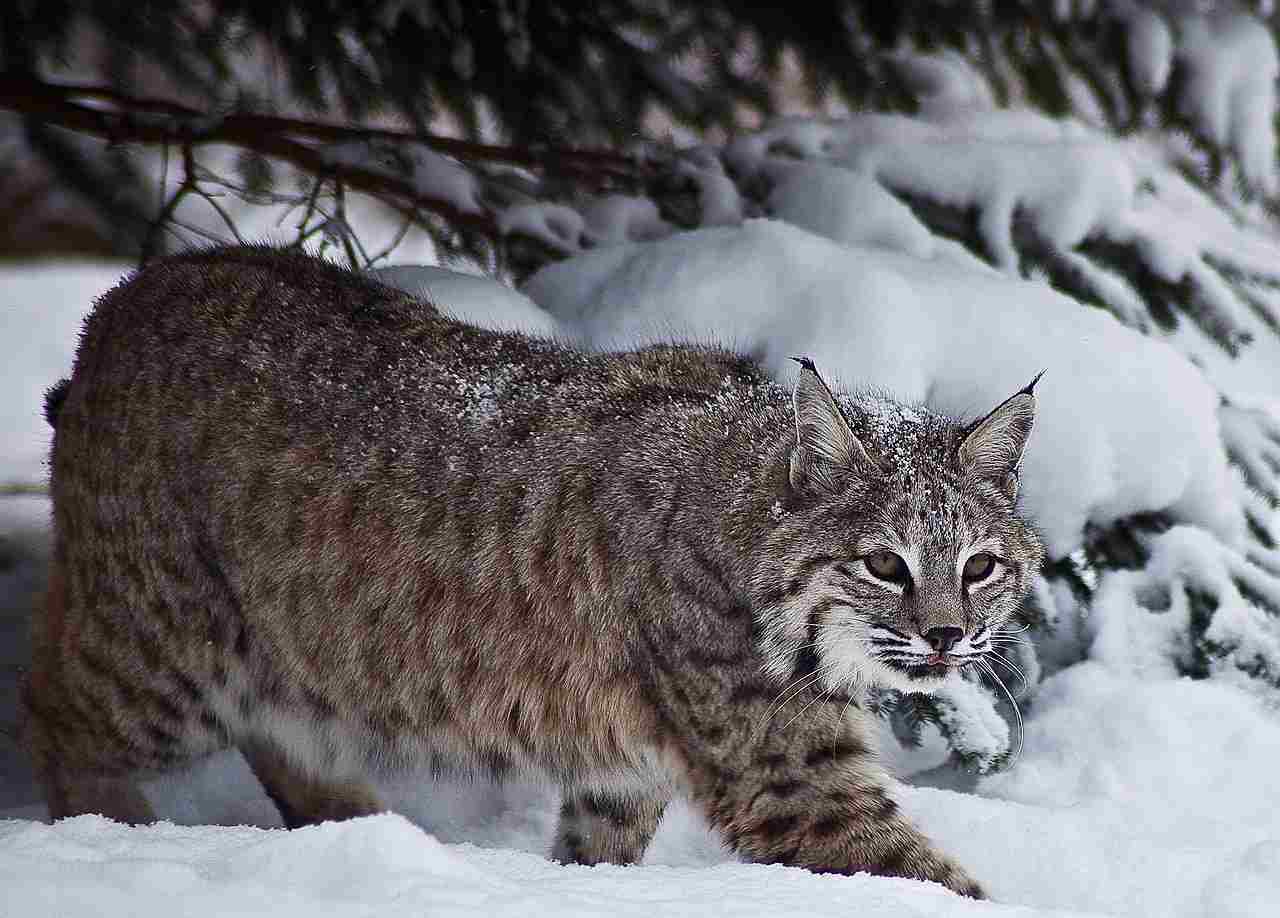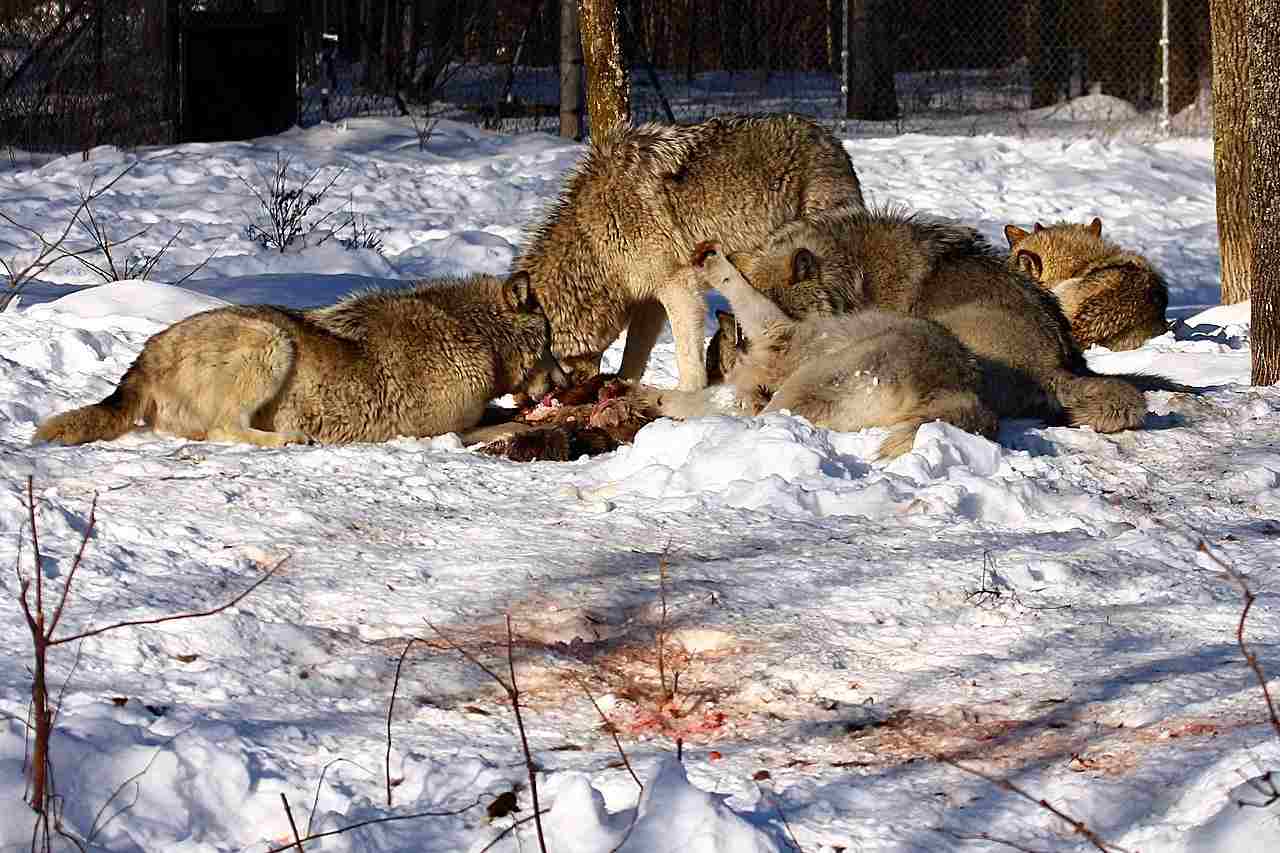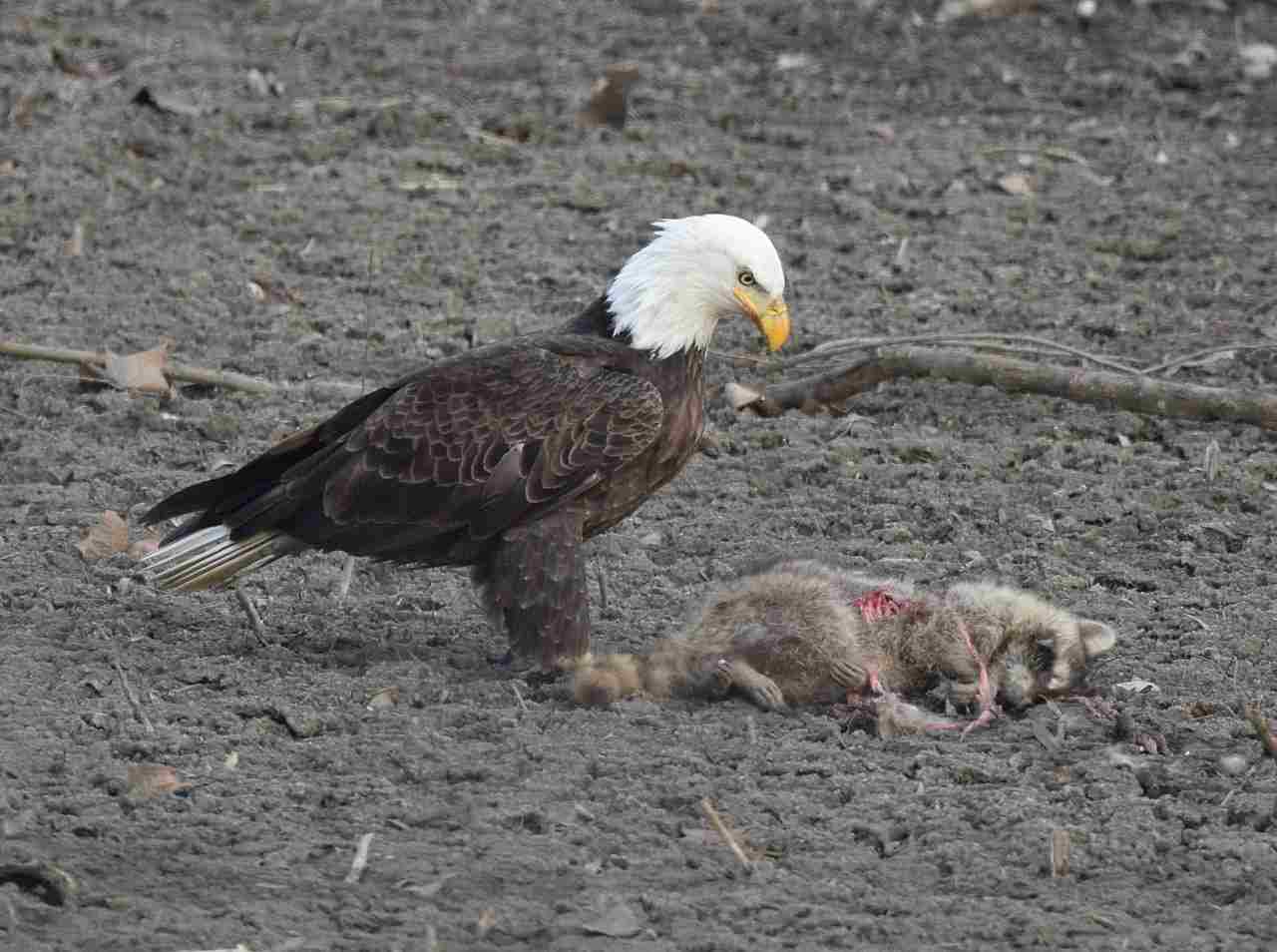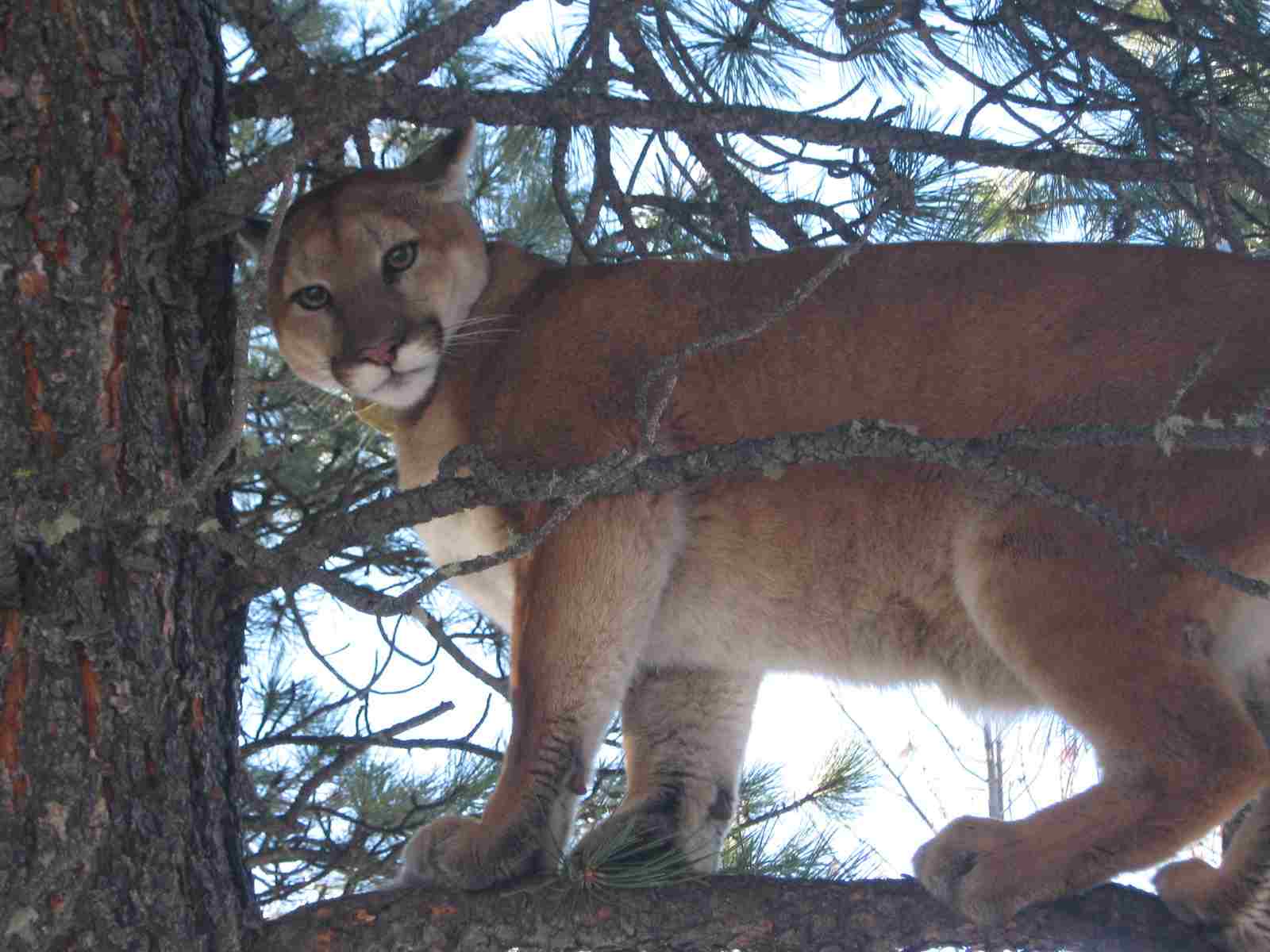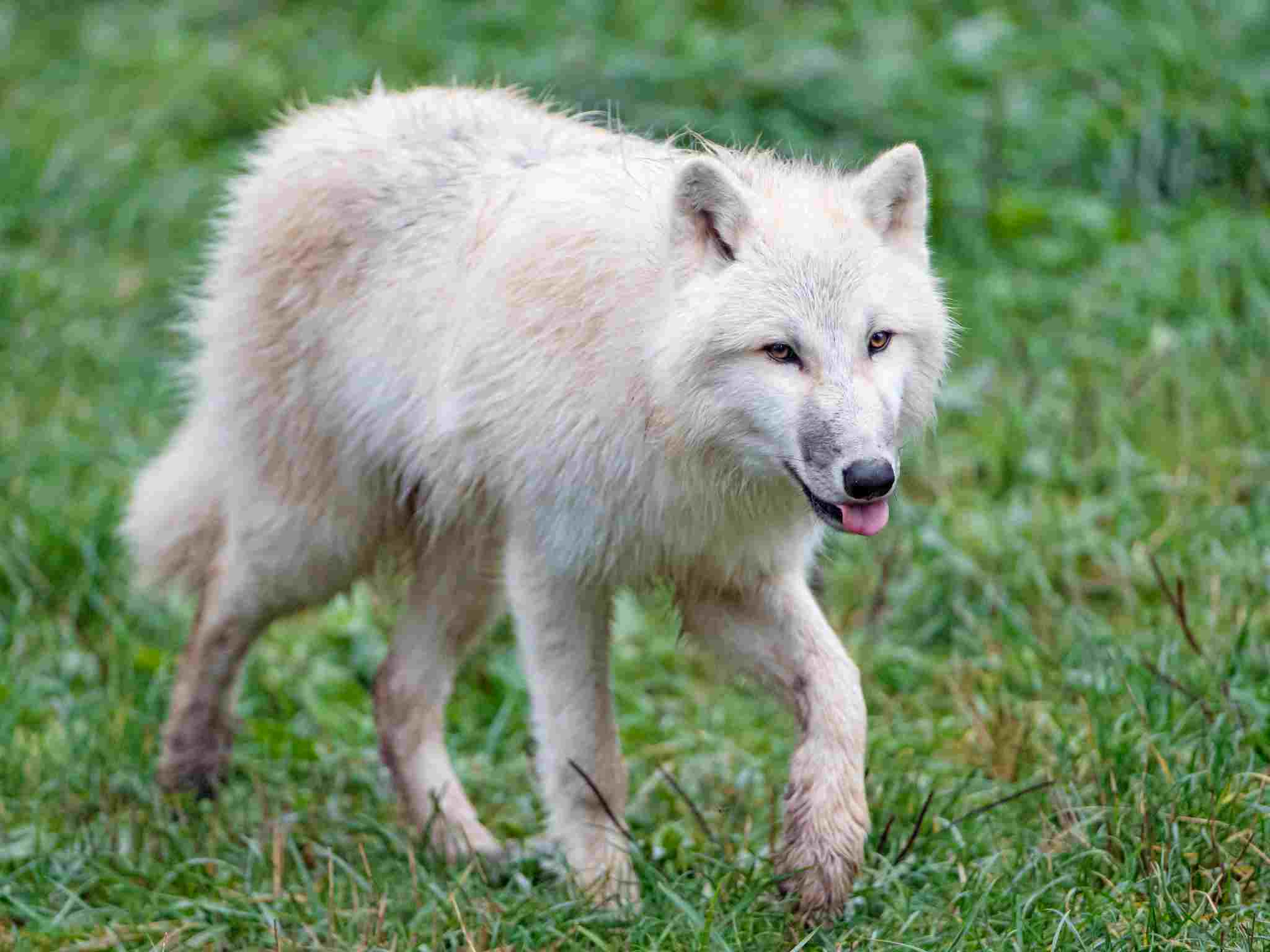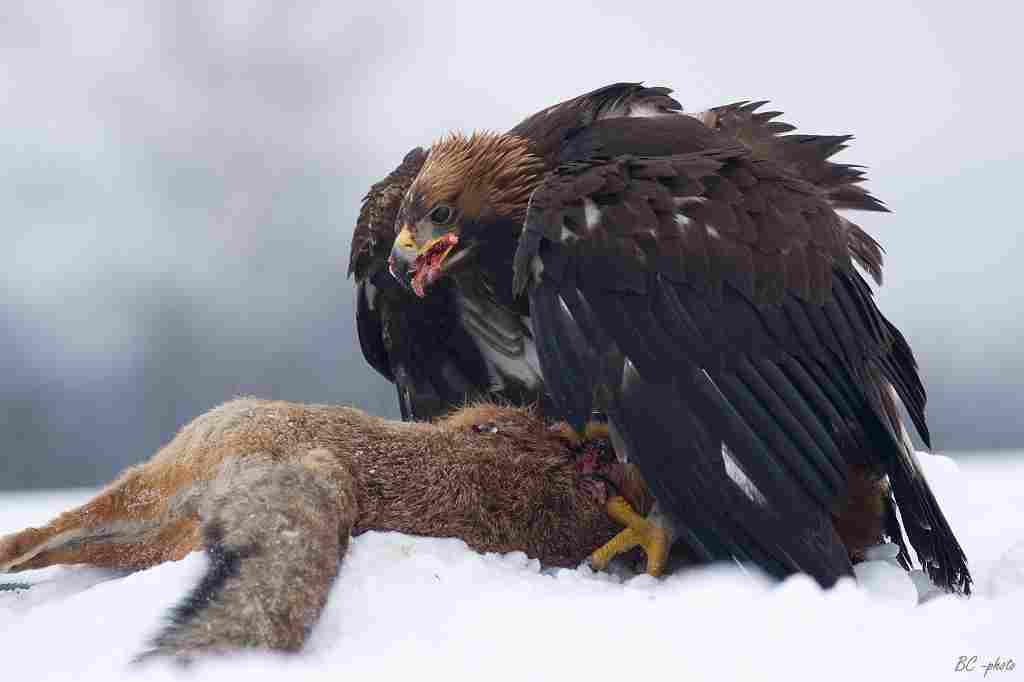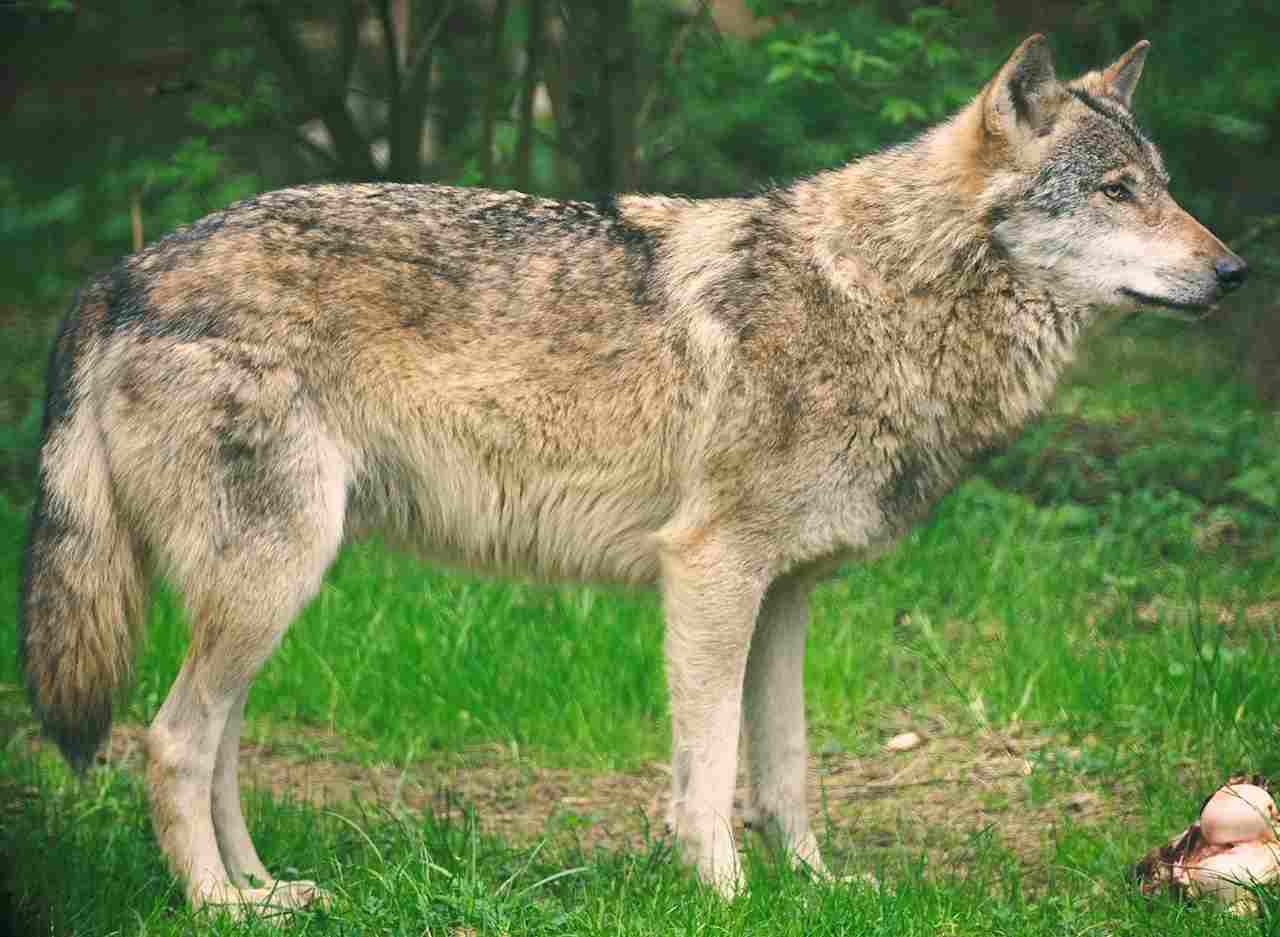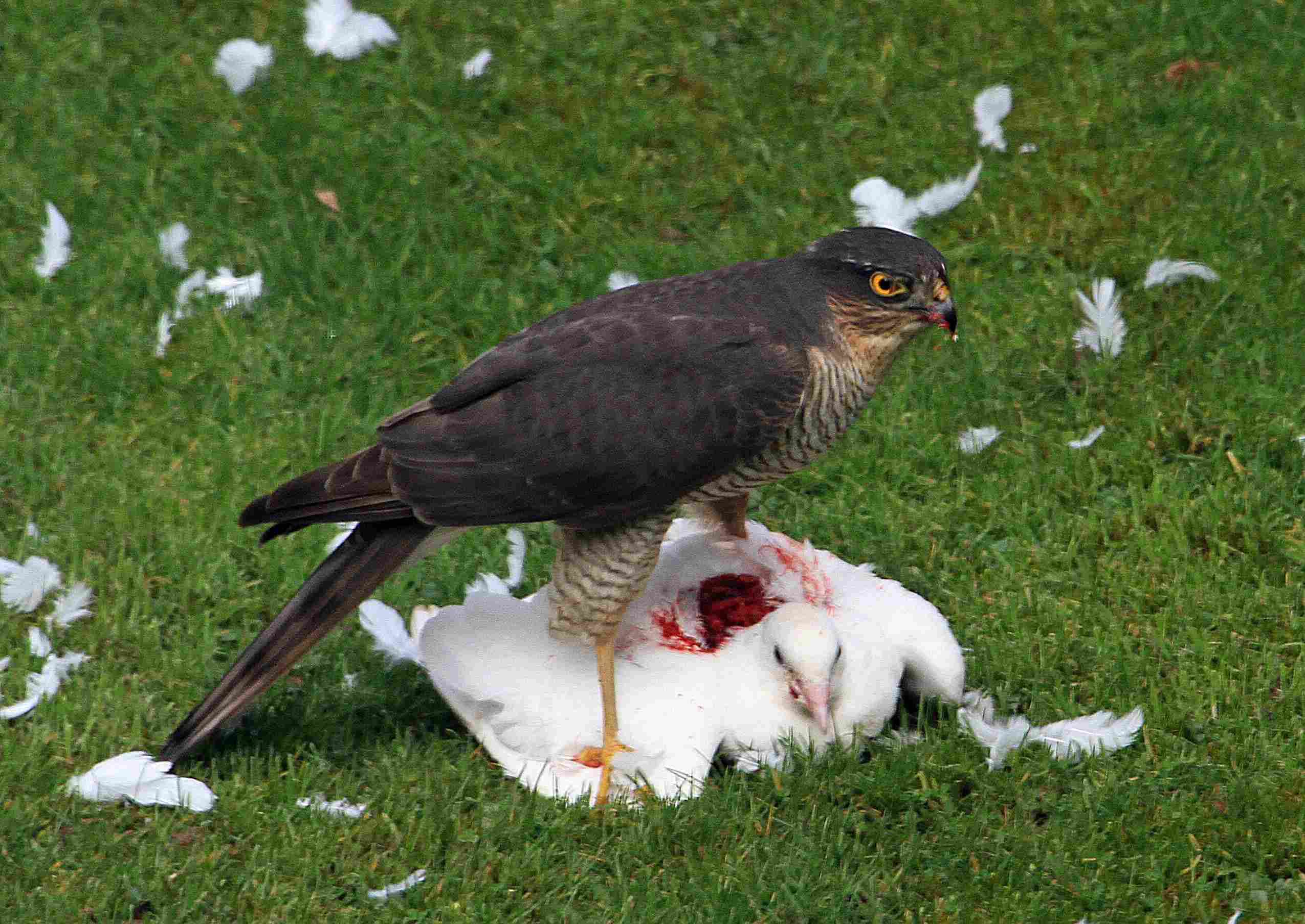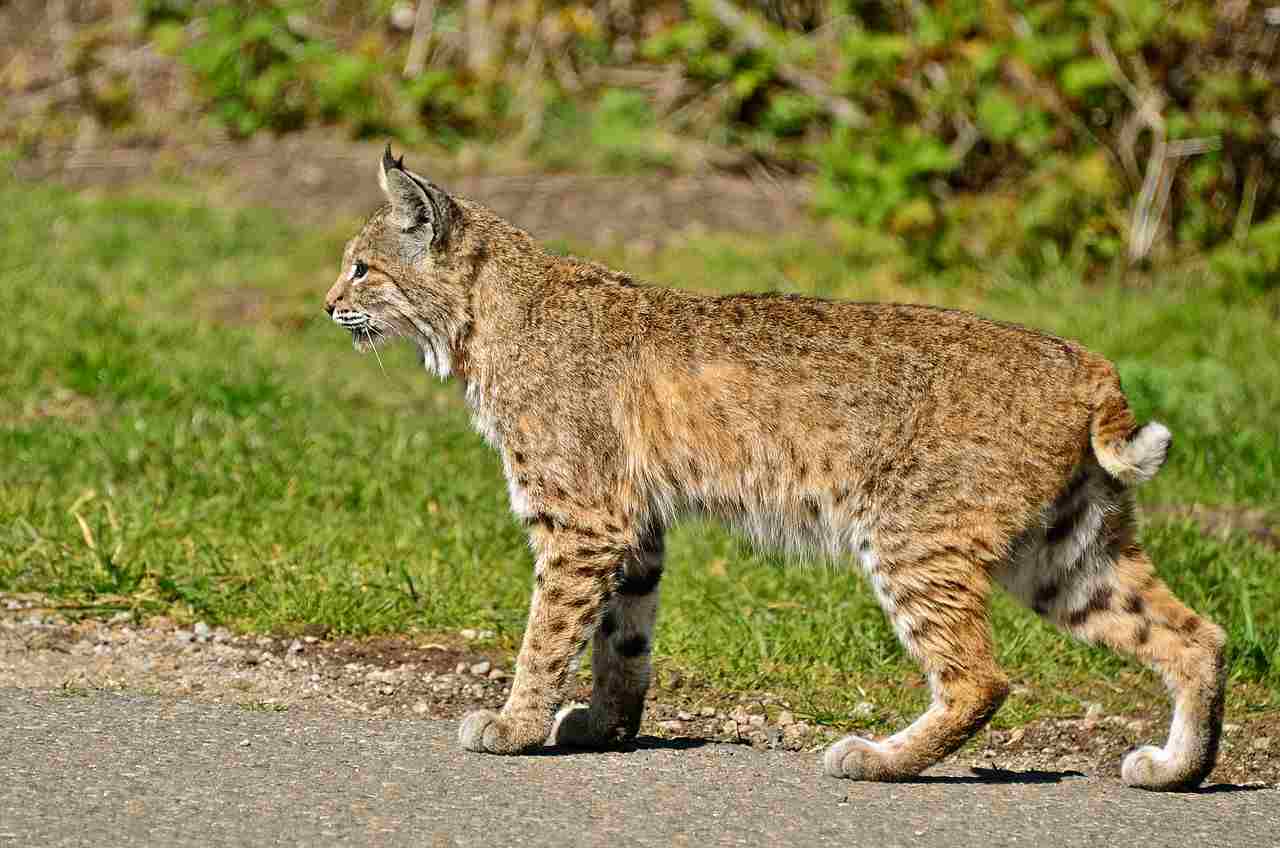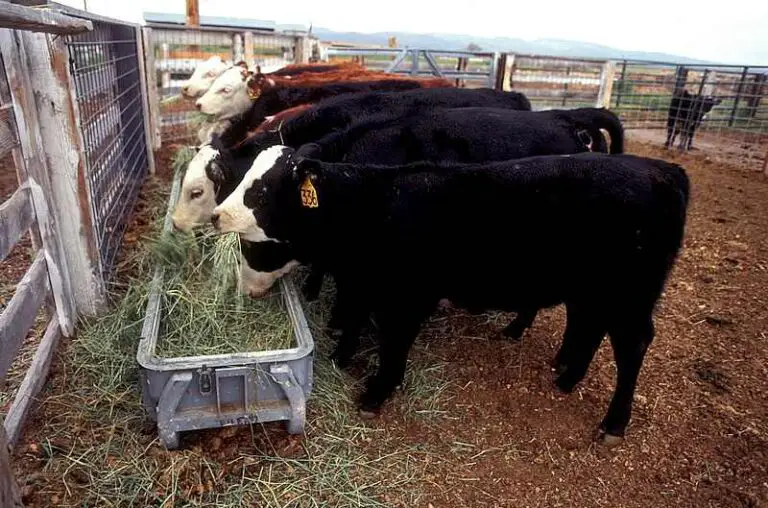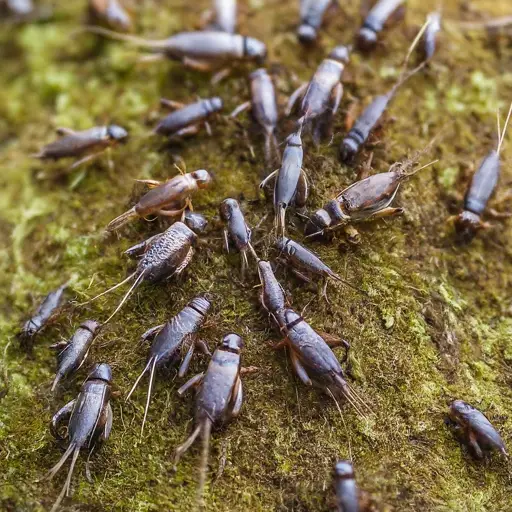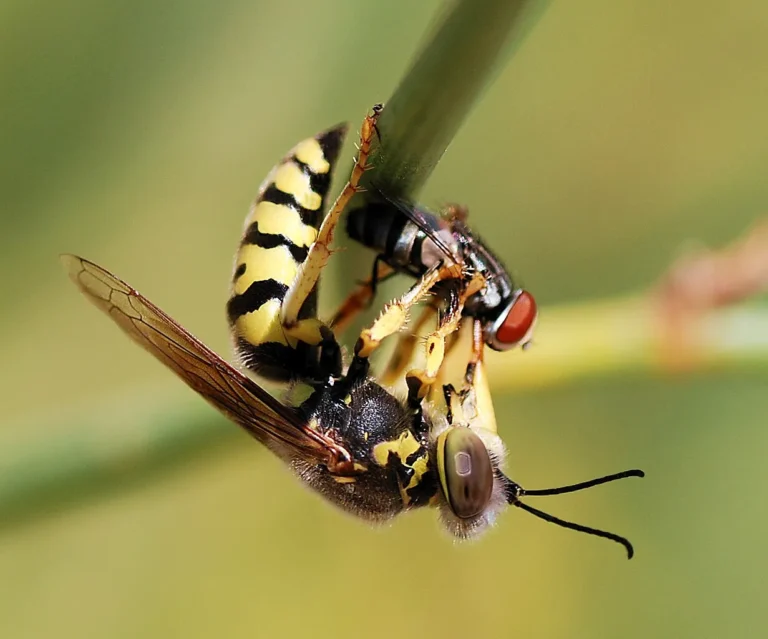9+ Carnivores in The Temperate Forest Ecosystem Discussed
Examples of carnivores in the temperate forest are cougars, badgers, wolves, bobcats, and various bird species like hawks and eagles. These carnivores play crucial roles in maintaining ecosystem balance by controlling prey populations and regulating food chains. Conservation efforts are essential to protect their habitats and mitigate human-wildlife conflicts, ensuring the survival of these iconic species in temperate forests for future generations.
1. Cougar
The cougar, also known as the mountain lion or puma, is a formidable carnivore inhabiting temperate forests across North and South America. With its sleek, muscular body and tawny fur, the cougar is an apex predator, often dominating its ecosystem. Its habitat ranges from dense forests to mountainous terrain, where it reigns as a solitary hunter.
Equipped with sharp retractable claws, powerful jaws, and exceptional agility, the cougar is a masterful ambush predator. It preys on a variety of animals, including deer, elk, and smaller mammals like raccoons and rodents. Despite its solitary nature, cougars require a vast territory to ensure an adequate prey base, leading to occasional conflicts over territory and resources.
Human encroachment on cougar habitats has led to increased encounters between these majestic predators and humans, resulting in conservation efforts to protect both the cougars and their ecosystems. Understanding the role of cougars in maintaining the balance of temperate forests is crucial for ensuring the health and biodiversity of these ecosystems for generations to come.
2. Badger
In temperate forests, the badger is a fascinating carnivore that plays a vital role in ecosystem dynamics. With its distinctive black and white facial markings and stocky build, the badger is well adapted to life underground. It constructs elaborate burrow systems, known as setts, where it shelters, raises young, and hunts.
Badgers are primarily nocturnal hunters, preying on a variety of small mammals, insects, and even birds and reptiles. Their powerful claws and strong jaws make them adept diggers and formidable predators. Despite their somewhat solitary nature, badgers are known to live in social groups called clans, consisting of related individuals.
Human activities such as urbanization and agriculture have encroached on badger habitats, leading to habitat loss and fragmentation. Conservation efforts aim to protect badger populations and their habitats, recognizing their importance in controlling prey populations and contributing to overall ecosystem health in temperate forests.
3. Japanese Marten
The Japanese marten, also known as the “ten,” is a carnivorous mustelid native to the temperate forests of Japan. With its sleek, elongated body and thick fur, the Japanese marten is well adapted to its forest habitat. It is primarily a solitary hunter, preying on small mammals, birds, insects, and fruits.
Despite its small size, the Japanese marten is an agile and efficient predator, capable of climbing trees and navigating through dense vegetation in search of prey. It plays a crucial role in controlling populations of rodents and other small animals, helping to maintain the balance of the forest ecosystem.
Human activities such as deforestation, habitat fragmentation, and hunting have posed significant threats to Japanese marten populations. Conservation efforts aim to protect their habitats and mitigate human-wildlife conflicts to ensure the survival of this iconic carnivore in temperate forests.
4. Bobcat
The bobcat is a medium-sized carnivore found in a variety of habitats, including temperate forests, across North America. With its distinctive tufted ears, short tail, and spotted fur, the bobcat is well adapted to its forest environment. It is a solitary and elusive predator, known for its stealth and agility.
Bobcats are opportunistic hunters, preying on a variety of small mammals, birds, and occasionally deer. Their keen senses of sight and hearing, coupled with their powerful muscles and sharp claws, make them formidable predators in the forest ecosystem. Despite their solitary nature, bobcats maintain overlapping territories, communicating through scent markings and vocalizations.
Human activities such as habitat loss, fragmentation, and hunting have impacted bobcat populations in some regions. Conservation efforts aim to protect their habitats and mitigate human-wildlife conflicts to ensure the continued presence of these iconic carnivores in temperate forests.
5. Wolf
Wolves are iconic carnivores that once roamed vast territories throughout temperate forests and beyond. With their highly social nature and intricate pack dynamics, wolves play a crucial role in shaping ecosystem dynamics. They are apex predators, preying on a variety of ungulates such as deer and elk, as well as smaller mammals like rabbits and rodents.
In temperate forests, wolf packs establish territories encompassing large expanses of land, where they hunt, raise their young, and defend against rival packs. Their complex social structure, led by an alpha pair, involves cooperative hunting, communication through vocalizations and body language, and care for their offspring.
Despite their ecological importance, wolves have faced significant challenges due to human activities such as habitat loss, persecution, and conflicts with livestock. Conservation efforts aim to restore and protect wolf populations and their habitats, recognizing their vital role in maintaining the balance of temperate forest ecosystems.
6. Common Garter Snake
The common garter snake is a widespread carnivorous reptile found in various habitats, including temperate forests, across North America. With its slender body and distinctive striped patterning, the garter snake is easily recognizable. It is primarily a terrestrial predator, preying on a variety of small animals, including insects, amphibians, and even small mammals.
Garter snakes play an important role in controlling populations of insects and other small animals, thus contributing to the balance of forest ecosystems. They are non-venomous and rely on constriction to subdue their prey before consuming it whole. Despite their small size, garter snakes are efficient hunters and are often encountered in forested areas, where they bask in the sun and hunt for prey.
Human activities such as habitat destruction and fragmentation, pollution, and road mortality pose threats to garter snake populations in some regions. Conservation efforts aim to protect their habitats and mitigate human-wildlife conflicts to ensure the survival of these fascinating reptiles in temperate forests.
7. Timber Rattlesnake
The timber rattlesnake is a venomous pit viper found in temperate forests across eastern North America. With its distinctive pattern of dark bands and rattling tail, the timber rattlesnake is both feared and revered. It is primarily a ambush predator, preying on small mammals such as mice, rats, and squirrels.
Despite their venomous nature, timber rattlesnakes play an important role in regulating prey populations and contributing to the balance of forest ecosystems. They are typically shy and elusive, preferring to avoid confrontation with humans whenever possible. When threatened, they will often retreat or use their rattling tail as a warning signal.
Human activities such as habitat destruction, persecution, and road mortality pose threats to timber rattlesnake populations in some regions. Conservation efforts aim to protect their habitats and raise awareness about the importance of these iconic reptiles in temperate forest ecosystems.
8. Eastern Rat Snake
The Eastern Rat Snake, also known as the black rat snake, is a non-venomous constrictor found in temperate forests of eastern North America. With its sleek black scales and sometimes yellow or white underside, the Eastern Rat Snake is adept at climbing trees and hunting small prey. It primarily preys on rodents, birds, and their eggs, playing a crucial role in controlling populations of pests in forest ecosystems.
Eastern Rat Snakes are skilled climbers, often utilizing trees and shrubs to hunt for prey and seek shelter. They are also known to hibernate during the winter months in underground burrows or other protected locations. Despite their non-venomous nature, Eastern Rat Snakes can be mistaken for venomous species, leading to persecution by humans.
Conservation efforts focus on protecting the habitat of Eastern Rat Snakes and raising awareness about their importance in controlling rodent populations and maintaining the balance of temperate forest ecosystems. By understanding and respecting these fascinating reptiles, humans can coexist harmoniously with Eastern Rat Snakes in their natural habitat.
9. White-Throated Hawk
The White-Throated Hawk, also known as the white-throated goshawk, is a powerful raptor found in temperate forests of South America. With its striking plumage and formidable hunting skills, the White-Throated Hawk is an apex predator in its ecosystem. It primarily preys on small mammals, birds, reptiles, and occasionally larger prey such as rabbits and squirrels.
White-Throated Hawks are skilled hunters, using their keen eyesight and sharp talons to capture prey both on the ground and in the air. They are often found perched high in the canopy, scanning the forest floor for potential prey. Despite their hunting prowess, White-Throated Hawks face threats from habitat loss, fragmentation, and persecution by humans.
Conservation efforts aim to protect the habitat of White-Throated Hawks and mitigate human-wildlife conflicts to ensure the survival of these magnificent raptors in temperate forest ecosystems. By preserving their habitat and respecting their role as top predators, humans can help maintain the balance of these fragile ecosystems for generations to come.
10. Chilean Hawk
The Chilean Hawk, also known as the Chimango Caracara, is a bird of prey native to the temperate forests and grasslands of South America, particularly in Chile and Argentina. With its striking black and white plumage and sharp beak, the Chilean Hawk is a formidable predator in its ecosystem. It primarily preys on small mammals, birds, insects, and carrion, using its keen eyesight and powerful talons to capture and subdue prey.
Chilean Hawks play an important role in controlling populations of rodents and other small animals, thus helping to maintain the balance of temperate forest ecosystems. They are often seen soaring high above the forest canopy or perched on tree branches, scanning the ground below for potential prey. Despite their hunting prowess, Chilean Hawks face threats from habitat loss, fragmentation, and persecution by humans.
Conservation efforts aim to protect the habitat of Chilean Hawks and raise awareness about their importance in maintaining the health and biodiversity of temperate forest ecosystems. By preserving their habitat and respecting their role as top predators, humans can help ensure the survival of these majestic birds of prey for future generations to enjoy.
11. Broad-Winged Hawk
The Broad-Winged Hawk is a migratory bird of prey found in temperate forests throughout North and South America. With its broad wings and distinctive plumage, the Broad-Winged Hawk is well adapted to life in forested habitats. It primarily preys on small mammals, birds, reptiles, and amphibians, using its sharp talons and powerful beak to capture and consume prey.
Broad-Winged Hawks are skilled hunters, often hunting from perches high in the canopy or soaring on thermal currents in search of prey. They are known for their spectacular migratory journeys, traveling thousands of miles between their breeding and wintering grounds. Despite their migratory nature, Broad-Winged Hawks face threats from habitat loss, pesticide exposure, and collisions with man-made structures.
Conservation efforts aim to protect the habitat of Broad-Winged Hawks and mitigate human-wildlife conflicts to ensure the survival of these iconic raptors in temperate forest ecosystems. By preserving their habitat and implementing measures to reduce human impacts, humans can help maintain the balance of these fragile ecosystems and ensure the continued presence of Broad-Winged Hawks for generations to come.
*Summary
-
Cougar (Mountain Lion/Puma)
-
Apex predator in temperate forests of North and South America.
-
Solitary hunter with vast territories.
-
Preys on deer, elk, and smaller mammals.
-
Human encroachment threatens populations.
-
-
Badger
-
Stocky carnivore with black and white markings.
-
Constructs elaborate burrow systems.
-
Nocturnal hunter preying on small mammals.
-
Habitat loss and fragmentation endanger populations.
-
-
Japanese Marten
-
Sleek mustelid native to Japanese temperate forests.
-
Solitary hunter preying on small mammals, birds, and fruits.
-
Climbs trees and navigates dense vegetation.
-
Threatened by deforestation and hunting.
-
-
Bobcat
-
Medium-sized carnivore with tufted ears and spotted fur.
-
Solitary and elusive predator.
-
Preys on small mammals and occasionally deer.
-
Faces challenges from habitat loss and persecution.
-
-
Wolf
-
Highly social apex predator.
-
Hunts in packs, preying on ungulates and small mammals.
-
Establishes territories in temperate forests.
-
Human activities threaten populations.
-
-
Common Garter Snake
-
Widespread carnivorous reptile.
-
Hunts small animals including insects and amphibians.
-
Non-venomous, relies on constriction.
-
Faces threats from habitat destruction and pollution.
-
-
Timber Rattlesnake
-
Venomous pit viper in eastern North American forests.
-
Ambush predator preying on small mammals.
-
Plays a crucial role in regulating prey populations.
-
Threatened by habitat loss and persecution.
-
-
Eastern Rat Snake
-
Non-venomous constrictor in eastern North American forests.
-
Hunts rodents and birds, adept at climbing.
-
Faces persecution due to mistaken identity.
-
Conservation efforts focus on habitat protection.
-
-
White-Throated Hawk
-
Powerful raptor in South American temperate forests.
-
Hunts small mammals, birds, and reptiles.
-
Important for controlling rodent populations.
-
Threatened by habitat loss and persecution.
-
-
Chilean Hawk (Chimango Caracara)
-
Bird of prey in South American temperate forests.
-
Preys on small mammals, birds, insects, and carrion.
-
Plays a vital role in controlling rodent populations.
-
Faces threats from habitat loss and persecution.
-
-
Broad-Winged Hawk
-
Migratory bird of prey in North and South American temperate forests.
-
Hunts small mammals, birds, reptiles, and amphibians.
-
Known for spectacular migratory journeys.
-
Threatened by habitat loss and human impacts.
-
| Carnivore | Summary |
| Cougar (Mountain Lion/Puma) |
– Apex predator in temperate forests of North and South America. – Solitary hunter with vast territories. – Preys on deer, elk, and smaller mammals. – Human encroachment threatens populations.
|
| Badger |
– Stocky carnivore with black and white markings. – Constructs elaborate burrow systems. – Nocturnal hunter preying on small mammals. – Habitat loss and fragmentation endanger populations.
|
| Japanese Marten |
– Sleek mustelid native to Japanese temperate forests. – Solitary hunter preying on small mammals, birds, and fruits. – Climbs trees and navigates dense vegetation. – Threatened by deforestation and hunting.
|
| Bobcat |
– Medium-sized carnivore with tufted ears and spotted fur. – Solitary and elusive predator. – Preys on small mammals and occasionally deer. – Faces challenges from habitat loss and persecution.
|
| Wolf |
– Highly social apex predator. – Hunts in packs, preying on ungulates and small mammals. – Establishes territories in temperate forests. – Human activities threaten populations.
|
| Common Garter Snake |
– Widespread carnivorous reptile. – Hunts small animals including insects and amphibians. – Non-venomous, relies on constriction. – Faces threats from habitat destruction and pollution.
|
| Timber Rattlesnake |
– Venomous pit viper in eastern North American forests. – Ambush predator preying on small mammals. – Plays a crucial role in regulating prey populations. – Threatened by habitat loss and persecution.
|
| Eastern Rat Snake |
– Non-venomous constrictor in eastern North American forests. – Hunts rodents and birds, adept at climbing. – Faces persecution due to mistaken identity. – Conservation efforts focus on habitat protection.
|
| White-Throated Hawk |
– Powerful raptor in South American temperate forests. – Hunts small mammals, birds, and reptiles. – Important for controlling rodent populations. – Threatened by habitat loss and persecution.
|
| Chilean Hawk (Chimango Caracara) |
– Bird of prey in South American temperate forests. – Preys on small mammals, birds, insects, and carrion. – Plays a vital role in controlling rodent populations. – Faces threats from habitat loss and persecution.
|
| Broad-Winged Hawk |
– Migratory bird of prey in North and South American temperate forests. – Hunts small mammals, birds, reptiles, and amphibians. – Known for spectacular migratory journeys. – Threatened by habitat loss and human impacts.
|
Related FAQs
Q: What should I do if I encounter a cougar in a temperate forest? A: If you encounter a cougar in a temperate forest, it’s important to remain calm and avoid running or turning your back. Back away slowly while maintaining eye contact with the cougar and making yourself appear larger by raising your arms. If the cougar approaches, make loud noises, throw objects, and be prepared to defend yourself with sticks or rocks. Never approach or corner a cougar, and always report encounters to local wildlife authorities.
Q: How can I differentiate between a venomous and non-venomous snake in a temperate forest? A: In temperate forests, it’s essential to be able to differentiate between venomous and non-venomous snakes. Look for key characteristics such as head shape, pupil shape, and coloration patterns. Venomous snakes often have triangular heads, vertical pupils, and distinctive color patterns, while non-venomous snakes typically have slender heads, round pupils, and more uniform coloration. However, it’s always best to err on the side of caution and give all snakes a wide berth.
Q: What should I do if I come across a wounded or distressed bird of prey in a temperate forest? A: If you encounter a wounded or distressed bird of prey in a temperate forest, it’s essential to approach with caution and avoid causing further stress or injury to the bird. Keep a safe distance and contact local wildlife rehabilitation centers or authorities for assistance. Do not attempt to handle or capture the bird yourself, as birds of prey can be dangerous and may require specialized care from trained professionals.
Q: How can I help conserve carnivore populations in temperate forests? A: There are several ways to help conserve carnivore populations in temperate forests, including supporting habitat conservation efforts, reducing human-wildlife conflicts, and promoting coexistence with carnivores. You can also participate in citizen science projects, advocate for wildlife-friendly policies, and educate others about the importance of carnivores in maintaining healthy forest ecosystems. Additionally, supporting organizations dedicated to carnivore conservation and volunteering your time and resources can make a positive impact on carnivore populations in temperate forests.
